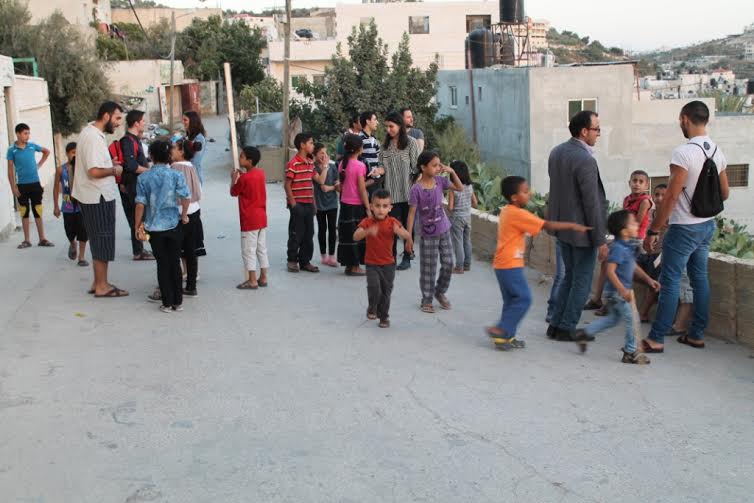A Visit to Some Villages and the Al Fawwar Refugee Camp, just outside of Hebron: Palestine is full of surprises as you will discover, after having arrived here for the first time. As we got more and more attached to El Khalil, as the locals call Hebron, we head to the villages of Al Dahreieh, Dura and the Al Fawwar Camp.
A short drive away from Hebron, to the North, you will be surprised by the landscape, it is greenery mixed with the typical stony desert hills. We reach the village of Dura, where are the “Al Quds Open University”, first in its kind allowing adult students to study for a Masters. Also, the city is known for its Football Stadium (the biggest one in Palestine, seating 18,000 people). We are told that in 2016, they played the world´s champions: Barcelona FC and Messi himself was there, a real pride for the locals and for Palestine! A local Palestinian legend has it that the patriarch Noah, in Islamic tradition Nebi Nûh, was buried in Dura.
Next stop, Al Daherieh town with its lovely old city which is not really lived in but preserved as a local heritage from the past. A gorgeous hostel has been built (see pictures), totally in keeping with the city. We are told this town used to be a small village but has grown into one of the most affluent suburbs of Hebron and we see an array of modern shops, hairdressing salons, restaurants surrounded by the lovely Dura hills.
Around Hebron, there are 2 refugees camps: Al Fawwar and Al Aroub. We went to Al Fawwar. Established in 1950 with tents for shelter. “However, when it became clear the refugees would not be returning home any time soon, more permanent houses were built by the UN in 1956. A key feature of the camp is the freshwater spring, Ein al-Delba, just outside its main entrance.”
it is hard to believe that was initially a temporary solution is now reaching its 70th years running… We are told it houses around 10,000 people over an extremely small surface. The camp has the look of a small modest village with very narrow streets leading to 2/3 story buildings. The main street has a couple of small grocery shops, a garage, and various other little businesses. It seems like time has stopped here.
The entrance/exit to the camp is randomly controlled by the Israeli army. An empty check-point/gate can be seen but at the time of our visit, it was unmanned. At the entrance of the village is a girl school, funded by the all-too-well know: UNRWA.
The camp inhabitants go to nearest Dora to get their big supplies but for them, it is often extremely difficult to travel outside of Hebron, let alone outside of Palestine. Some of the children of Al Fawar have only ever known life inside the camp so any visitor is a breath of fresh air for them, a chance to learn about the outside.
Every summer the EC organizes English workshops/lessons in the 2 schools of the camp. Ousama, Manager of one of the EC Centre, tells me “The summer seems even longer when you live in a crowded camp away from everything, we always encourage our volunteers to go and visit it and every week there are English lessons during the summer or any activity that can be led by our volunteers. Ask us if you are interested to take part! It is a 2 way very rewarding and gratifying experience!”




